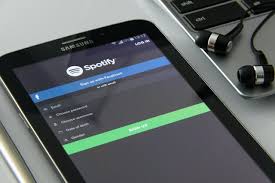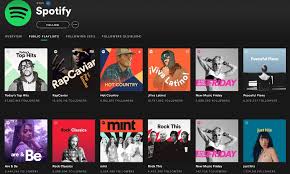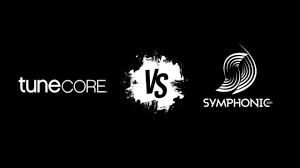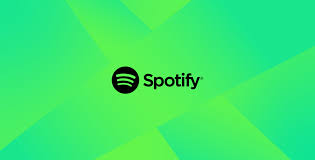Introduction: Why Estimating Spotify Streams Matters
Whether you're an independent artist, a music manager, or a label marketer, you've probably asked: how do I estimate future streams on Spotify?
Forecasting plays are more than just a vanity metric—it influences decisions about release schedules, ad budgets, investor pitches, tour planning, and even brand deals.
In 2025, Spotify's algorithm is more complex than ever, and while you can't predict virality with perfect accuracy, there are proven ways to make data-informed projections about your future stream counts. This article breaks it all down—metrics, tools, models, and case examples—to help you estimate future Spotify streams with more confidence and clarity.

Understand How Spotify Streams Work
Before diving into projections, let’s clarify what a Spotify “stream” actually is:
One stream = a user plays a track for at least 30 seconds
Only unique plays count toward royalties
Streams come from various sources: playlists, profiles, search, algorithmic radio, and direct links
Understanding the anatomy of a stream is the first step toward building a reliable stream estimate model.
Analyze Your Current Performance First
Your current data is the most reliable predictor of your future streams. Inside Spotify for Artists, you'll find metrics that can help shape accurate estimations:
Daily/weekly/monthly stream trends
Listener retention rates
Save rate (saves ÷ streams)
Playlist adds and removal trends
Source of streams (algorithmic vs editorial vs user-generated)
Follower growth
If your last five singles averaged 20k streams in the first 30 days, and your followers grew steadily during that time, that’s a base you can project forward from.
Use Trend-Based Forecasting (Linear & Exponential)
Let’s say you’ve been releasing one track a month for the past six months. Here’s how to estimate future streams using trend lines:
1. Linear Growth Model
If your monthly streams have grown steadily from 10k to 15k to 20k to 25k, you can reasonably project your next month to hit ~30k—assuming consistency in promotion and content quality.
Formula:
Future streams = current streams + average monthly stream increase
2. Exponential Growth Model
If you’ve recently been added to big editorial playlists or gone viral on TikTok, growth may curve upward faster.
Formula (simplified):
Future streams = current streams × growth rate^time
?? Tip: Use Excel or Google Sheets to chart growth visually and apply a best-fit line. Free tools like Chartmetric and MusicStax also help visualize trends.
Estimate Spotify Streams from Playlist Reach
Spotify playlists are the biggest external influence on future stream potential. Here's how you can project streams from editorial or user-generated playlist placements.
Example:
Playlist followers: 500,000
Typical stream-to-follower ratio: 5–15%
Expected stream range: 25,000 to 75,000
Combine multiple playlists for cumulative reach. Be sure to track the historical performance of those playlists—some have low engagement despite high follower counts.
Use Spotify’s Algorithmic Triggers to Forecast
Spotify's algorithm favors tracks with:
High save rate (>10%)
Low skip rate (<30%)
High stream-to-follower ratio
Strong post-release performance (within the first 7 days)
If your song hits those benchmarks, you’re more likely to get placed in Discover Weekly, Release Radar, and Spotify Radio—each capable of generating 10k–100k streams weekly depending on your listener base.
Strategy:
Run a short pre-release campaign, track the first week of performance, and use that as a basis for extrapolation.
Build a Campaign-Driven Stream Estimation Plan
If you're promoting a track with ads, influencer campaigns, or collaborations, your future streams can be partly predicted by campaign metrics.
Let’s break it down:
| Campaign Type | Metric | Conversion Estimate | Projected Streams |
|---|---|---|---|
| Instagram Reels | 100,000 views | 2% click-through | 2,000 streams |
| TikTok trend | 250,000 plays | 1.5% conversion | 3,750 streams |
| Spotify Ads | 10,000 impressions | 5% conversion | 500 streams |
This method gives you bottom-up forecasting based on actual marketing inputs—not just historical streaming.
Tools That Help Estimate Spotify Streams
1. Spotify for Artists
Your core dashboard for real-time performance data. Offers insights into audience geography, sources, saves, and follower growth.
2. Chartmetric
Tracks playlist adds, engagement, and comparative artist data. Useful for forecasting based on playlist trajectory.
3. Soundcharts
Great for competitor benchmarking and media monitoring. Shows how other artists in your genre are trending.
4. SpotOnTrack
Specializes in playlist tracking and stream estimates from placements.
5. ToneDen or Feature.fm
For analyzing marketing campaign performance and estimating conversion-driven streams.
Forecasting Based on Genre Norms
Some genres naturally stream more. For example:
| Genre | Average Streams in First 30 Days |
|---|---|
| Pop | 50,000+ |
| Hip-Hop | 30,000–100,000 |
| Indie Rock | 10,000–25,000 |
| Classical | 5,000–15,000 |
| EDM | 20,000–60,000 |
Bonus: Create a Spotify Stream Estimation Template
Here’s a basic DIY spreadsheet formula to estimate your next release's 30-day stream count:
Inputs:
Avg streams of past 3 releases
Playlist follower totals
Marketing reach (e.g., TikTok, Instagram)
Save rate
Output:
Low estimate (no playlist, organic only)
Medium estimate (one UGC playlist + social boost)
High estimate (editorial playlist + strong viral signal)
Conclusion: Estimating Future Streams on Spotify Isn’t an Exact Science—but It Can Be Smart
No one can predict virality—but with the right tools, data, and benchmarks, you can build realistic expectations about your future Spotify streams. Whether you’re working independently or with a label, knowing how to estimate future streams on Spotify helps you make smarter marketing, budgeting, and growth decisions.
The key is combining historical data, campaign planning, and playlist performance to project outcomes. With every release, your estimate becomes more accurate.
So the next time you're prepping for a drop, don’t guess—forecast it.
FAQs: How to Estimate Future Streams on Spotify
Can I predict Spotify streams accurately?
You can’t predict virality, but you can estimate based on your past performance, playlist reach, and campaign size.
What’s a good save rate on Spotify?
A save rate of 10% or higher is considered strong and often triggers algorithmic support.
How much do Spotify playlists influence streams?
Editorial playlists can generate tens of thousands of streams, while user playlists can still drive steady long-term plays.
Are there tools to estimate Spotify streams?
Yes. Tools like Spotify for Artists, Chartmetric, Soundcharts, and SpotOnTrack can help you build realistic forecasts.
Does genre affect stream estimates?
Absolutely. Genres like pop, hip-hop, and EDM tend to stream more than classical, jazz, or experimental music.







